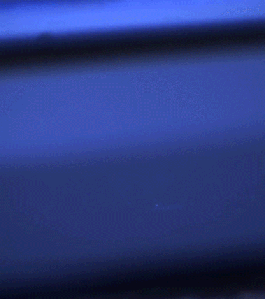Topic #2: In situ analytical tools for (photo)electrochemical materials and devices

Key to the successful development of any new electrocatalyst or photocatalyst is the accurate determination of its catalytic activity and the reaction mechanism(s) taking place at its surface. These tasks are especially important for complex, multi-component (photo)catalysts, where deconvoluting the influence of various parameters (true surface area, heterogeneous composition, etc.) can be very difficult. With these challenges in mind, one of the primary thrusts of our research is to develop and employ scanning probe techniques for in-situ evaluation of the optical, electronic, and catalytic properties of (photo)catalytic materials with high spatial resolution. Scanning probe measurement (SPM) techniques can be broadly defined as techniques in which a physical, optical, or electromagnetic probe is scanned across the surface of a sample while the probe/surface interaction is recorded as a function of probe position. Depending on the nature of the probe and its interaction with the surface, the properties of the surface and its surroundings are thus determined with spatial resolution that is generally around the size of the probe tip.
In our lab, the primary in situ SPM techniques to be employed are scanning photocurrent microscopy (SPCM), scanning electrochemical microscopy (SECM), and Raman spectroscopy. In some cases, we employ these techniques in parallel, allowing for simultaneous collection of complementary information that is well-suited for i.) elucidating fundamental nano- and micro-scale charge transfer phenomena ii.) screening for highly efficient and stable (photo)catalytic materials, iii.) diagnosing inefficiencies observed in macro-scale measurements, and iv.) guiding the design and optimization of cell and materials architectures.
Video of automated, home-built scanning electrochemical microscope (SECM) containing a motorized rotational stage for electrochemical imaging with a continuous line probe (CLP). The macroscopic length of the CLP, combined with compressed sensing imaging reconstruction carried out by our collaborators in the Wright group at Columbia, provide the opportunity to increase imaging rates by an order of magnitude or more compared to conventional SECM. Video credit: Jane Nisselson, Columbia Engineering.
Additional efforts in our lab involve the development of novel scanning probe geometries for SECM that will enable greatly enhanced areal scan rates and functionality compared to existing probes. SECM is a versatile chemical imaging technique, but conventional SECM is based on very inefficient, point-by-point sampling method. By using non-local probes such as continuous line probes (CLP) combined with compressed sensing (CS) signal analysis (in collaboration with John Wright in Electrical Engineering), we have introduced a new approach to chemical imaging that has potential to increase areal imaging rates by orders of magnitudes for some sample types. Early demonstrations of CLP-SECM imaging can be found in references [3] and [5], listed below, and we have completed building a first-of-its-kind SECM microscope specifically designed for imaging with non-local probes (see video above). We are especially interested in applying CLP-SECM to discover novel electrocatalyst compositions and better understand how sparse variations in electrocatalyst features impact durability and performance.
Publications in the Research Area:
Review or Perspective Article(s):
R1. D.V. Esposito, J.B. Baxter, J. John, N.S. Lewis, T.P. Moffat, T. Ogitsu, G.D. O’Neil, T.A. Pham, A.A. Talin, J.M. Velazquez, B.C. Wood. “Methods of Photoelectrode Characterization with High Spatial and Temporal Resolution.” Energy & Environmental Science. vol. 8, 2863-2885, 2015.
Original Research Articles:
- A. E. Dorfi, A.C. West, D.V. Esposito, “Quantifying Losses in Photoelectrode Performance due to Single Hydrogen Bubbles”, Journal of Physical Chemistry C., 2017. Download here.
- D.V. Esposito, Y. Lee, N.Y. Labrador, H. Yoon, P. Haney, A.A. Talin, V. Szalai, T.P. Moffat, “Deconvoluting the Influences of 3-D Structure on the Performance of Photoelectrodes for Solar-Driven Water Splitting”. Sustainable Energy & Fuels, vol. 1, 154-173, 2017. Download here.
- G.D. O’Neil, H. Kuo, D. Lomax, J. Wright, D.V. Esposito, “Scanning Electrochemical Microscopy: Beyond the Point Probe”, Analytical Chemistry, 2018, 90 (19), pp 11531–11537. Download here.
- J. Davis, D. Brown, X. Pang, D.V. Esposito, “High Speed Video Investigation of Bubble Dynamics and Current Density Distributions in Membraneless Electrolyzers”. Journal of the Electrochemical Society, vol. 166 (4), pp F312-F321, 2019. Download here.
- A. E. Dorfi, H. Kuo, V. Smirnova, J. Wright, D.V. Esposito, “Scanning Electrochemical Microscope for High Throughput Imaging with Continuous Line Probes”. Review of Scientific Instruments, vol. 90, pp 083702, 2019. Download here.
- A. E. Dorfi, S. Zhou, A.C. West, J. Wright, D.V. Esposito, “Probing the Speed Limits of Scanning Electrochemical Microscopy with In situ Colorimetric Imaging”. ChemElectroChem, vol. 7, 2424-2432, 2020. Download here.
- W. Stinson, K. Brayton, S. Ardo, A. Alec Talin, D. V. Esposito, “Quantifying the Influence of Defects on Selectivity of Electrodes Encapsulated by Nanoscopic Silicon Oxide Overlayers”. ACS Applied Materials & Interfaces, 2022, 14 (50), ppt. 55480-55490. Download here.
Go to next topic: Solar Reactors & Electrochemical Cells